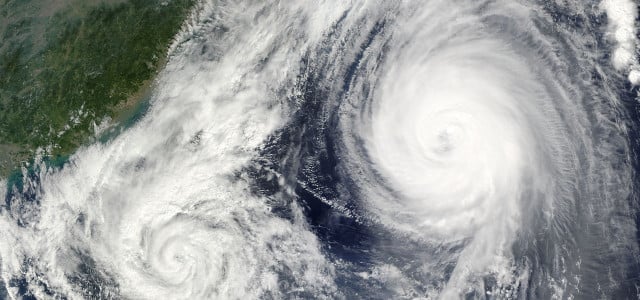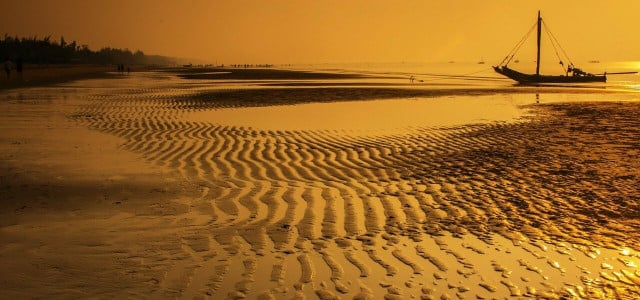When it comes to hurricanes vs. typhoons, the differences are minimal and the similarities abundant. Find out more about these aggressive weather phenomena by reading more.
When it comes to hurricanes vs typhoons, it basically boils down to location. Unfortunately, they can inflict the same level of destruction, carnage and loss of life as each other. Both can be equally destructive when they make landfall.
Certain regions in the US and other parts of the world possess the exact factors necessary to whip up a hurricane or a typhoon. The populations in these areas are therefore at high risk of suffering their wrath. Many warn that global warming and the climate crisis will cause these monster storms to intensify.
Keep reading to find out all you need to know about hurricanes vs typhoons and which one you are more likely to encounter.
Hurricanes vs. Typhoons: What's the Difference?
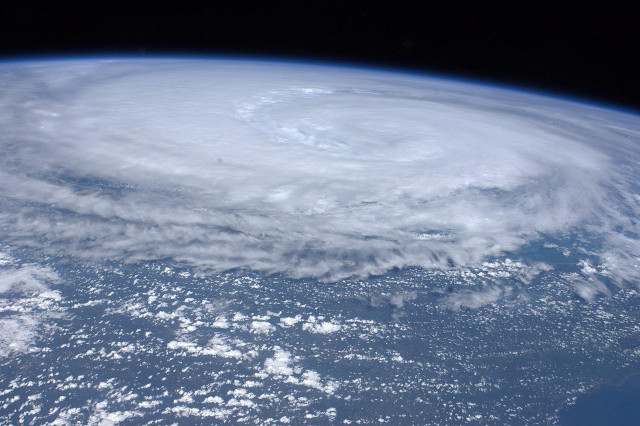
(Foto: CC0 / Pixabay / WikiImages)
If you are wondering what the difference is between hurricane and typhoons, just find out where in the world the weather event is taking place. Hurricanes and typhoons are just different names for the same type of tropical storm. They are also called tropical cyclones. It just depends on which ocean the tropical cyclone is developing over.
The Red Cross describes whether a tropical cyclone should be called a hurricane or typhoon:
- If it’s above the North Atlantic, central North Pacific or eastern North Pacific oceans — including Florida, Caribbean Islands, Texas, Hawaii and beyond — it’s called a hurricane.
- If it’s over the Northwest Pacific Ocean —usually East Asia, including Japan, China and the Philippines — it’s called a typhoon.
- If it’s over any other region, it’s usually called a tropical cyclone.
- If a cyclone forms in one place and crosses over to the other, it will change names from hurricane to typhoon and vice versa.
Are Hurricanes and Typhoons Classified the Same Way?
Hurricanes are classified according to the Saffir-Simpson Hurricane Wind Scale. This scale ranges from categories one to five — with those ranking above three considered major storms posing danger to life, buildings and infrastructure. A category five hurricane has wind speeds that exceed 157 miles per hour.
Typhoons are also classified on the Saffir-Simpson Hurricane Wind Scale, but can be classified on the Japan Meteorological Agency typhoon scale too. This scale ranges from a tropical depression at class 2 — to a very strong or very violent typhoon at class 5.
A very strong typhoon reaches sustained windspeeds between 157-192 km/hour (97-119 miles/hour). A violent typhoon exceeds these speeds.
The World Meteorological Organization, a UN body, maintains a list to name tropical cyclones around the world. The names of the deadliest ones, like Typhoon Haiyan or Hurricane Katrina are usually retired and replaced.
Development of Hurricanes and Typhoons
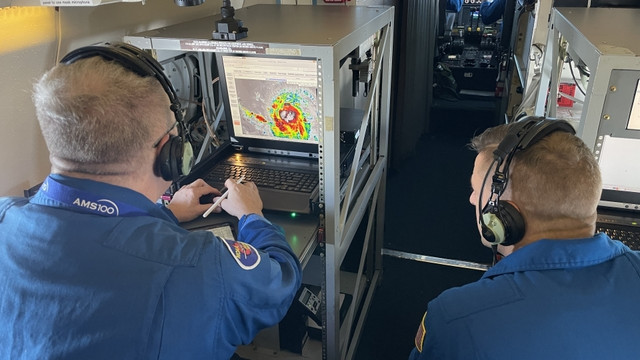


(Foto: NOAA/NGS)
Because hurricanes and typhoons are the same weather event, they develop in the same ways and begin as weak tropical cyclones. According to the National Oceanic and Atmospheric Administration (NOAA), weak tropical cyclones — also called tropical depressions — can intensify and develop into hurricanes and typhoons.
If a depression reaches sustained winds of 39 miles per hour, it becomes a tropical storm. Once a tropical storm reaches sustained winds of 74 miles per hour or higher, it is then classified as a hurricane or a typhoon — depending on where the storm originates.
Find out more of the basics in our guide: What Is a Hurricane, Exactly? The Basics Explained
The Coriolis Effect



(Foto: CC0 / Pixabay / PIRO4D)
To understand the Coriolis force or the Coriolis Effect, we must consider two things:
- The planet is spherical.
- The planet is spinning.
As Earth spins, regions near the middle of the planet — or the equator — must move much faster than those near the poles because of the planet’s spherical shape. This is how Earth maintains a 24-hour day.
A broad zone of low pressure stretches from either side of the equator along the tropics. The winds on either side of this zone blow in different directions and are driven by the low-pressure core — as well as Earth’s rotation or spin.
Objects moving on the surface of the Earth appear to follow a curved path because of how the planet is spinning. This is known as the Coriolis force, where typhoons and hurricanes get their spin from.
In the Northern Hemisphere, the Coriolis Effect is positive and causes winds to curve counter-clockwise. In the Southern Hemisphere, it is negative and curves them clockwise. This is why hurricanes and typhoons in the Northern Hemisphere rotate in a counter-clockwise direction, while they take a clockwise twist in the Southern Hemisphere. Further than 300 miles from the equator, hurricanes, typhoons and tropical cyclones can not form because there is no Coriolis Effect.
Seasonal Super-Storms
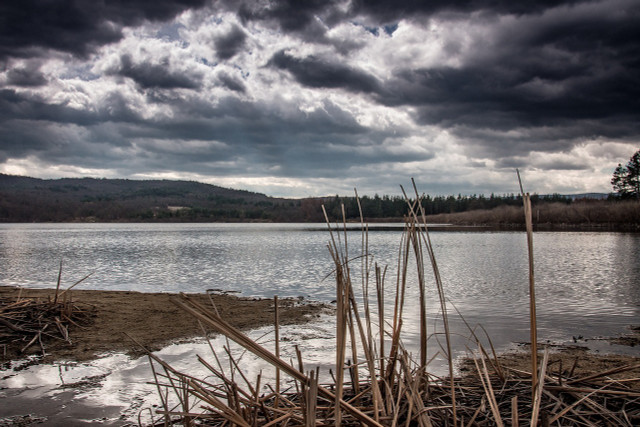


(Foto: CC0 / Pixabay / Anestiev)
Tropical storms develop most often in late summer to early fall — when there is the greatest difference between air and water temperatures. Globally, May is the least active month and September is the most active month for hurricanes and typhoons.
Generally, storm seasons are:
- Hurricanes – June to November
- Typhoons – April to December
- Cyclones – November to April
Parts of the western Pacific are warm enough for the storms to develop at any time during the year, although late summer and early fall are still the most common periods here, too. This extra heat in the Pacific is why typhoons can be more intense and more frequent than hurricanes generally.
These are major sources of destruction from hurricanes and typhoons:
- Wind causes damage to homes, infrastructure, power lines and building, as well as flying debris at high wind speeds.
- Storm surges can cause sea levels to rise by as much as 20 to 30 feet and push the ocean water inland.
- Torrential rainfall leads rivers to burst and causes widespread flooding and mudslide formation.
Deadly Storms in History
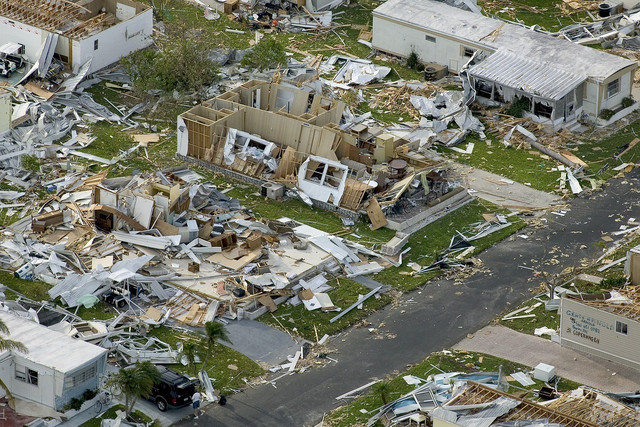


(Foto: CC0 / Pixabay / WikiImages)
Many regions in the US — like Galveston in Texas and New Orleans in Louisiana — have seen their fair share of tropical storms. The Galveston Hurricane of 1900 is considered the deadliest weather system to hit the US. By the time the storm reached the Texas coast, it was a Category 4 hurricane. Storm tides of 8 to 15 feet battered Galveston Island and the Texas coast. The estimated loss of life is between 8,000 and 12,000 — and damage is estimated at $30 million.
Hurricane Katrina devastated New Orleans in 2005, caused damage of over $75 billion and claimed 1200 lives. The storm surge and flooding reached 25–28 feet above average in Mississippi and 10–20 feet in Louisiana.
Many other parts of the American eastern seaboard and beyond are also hurricane hotspots — from Florida to the Bahamas, Mexico, and Puerto Rico. Hurricane Ian made landfall in 2022, first in Florida as a Category 4 storm and again as a Category 1 in Georgetown, South Carolina. Ian caused the second-largest insured loss after Hurricane Katrina, inflicting $50–65 billion in damages.
When Hurricane Sandy hit the Queens Borough of New York, it merged with another weather system to create an extra-tropical cyclone known as Superstorm Sandy. It spanned over 900 miles and generated a 32.5-foot wave in New York Harbor. Sandy claimed 72 lives and left $65 billion in damage.
In the Pacific and Indian Oceans, the usual typhoon targets are Bangladesh, the Philippines, Myanmar, Laos, Vietnam, Japan and India.
Typhoon Haiyan was a Category 5 super typhoon that produced a world record for wind speeds of 195 miles per hour in 2013. It battered several parts of Southeast Asia — particularly the Philippines. Haiyan’s death toll of 6,300 makes it the deadliest Philippine typhoon on record.
Super Typhoon Noru was the strongest storm to hit the Philippines this year and claimed the lives of five rescue workers. Noru came only nine months after another super typhoon devastated other regions of the country and killed more than 400 people, leaving hundreds of thousands homeless.
The 2022 hurricane season in the US saw Ian, Nicole and Fiona bring devastation and damage to Puerto Rico and the coast of Florida. Eight of 2022’s 14 tropical storms evolved into hurricanes.
Super-Storms on the Horizon?
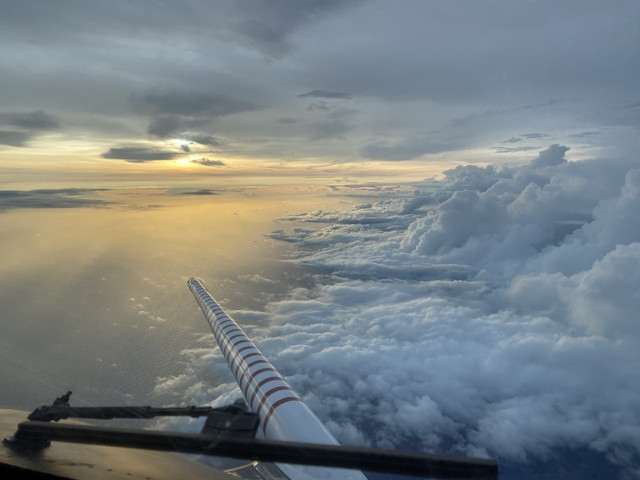


(Foto: NOAA/NGS)
The good news is that it looks as though the frequency of hurricanes and typhoons might be decreasing. In 2022, the numbers of tropical cyclones and major tropical cyclones were both below the 1991–2020 averages.
The bad news is that many experts are warning that global warming will likely lead to more intense storms making landfall more often. The relationship between hurricanes and typhoons and ocean temperatures is a complex one.
Some believe that global and ocean warming is already causing tropical storms to intensify. For example, many now question whether Typhoon Merbok — which ripped through Alaska in September this year — was due to the unusually warm temperatures in the Pacific for the time of year.
It’s important that we all do things to save the ocean and combat climate change— whether these storms will intensify or not. Check out our article to find out how achievable our climate targets really are and stand up to climate change denial today.
Read more:
- Conserving Energy: 10 Ways to Save Electricity
- 10 Must-Watch Environmental Documentaries
- Plastic Pollution in the Ocean: What Can I Do About It?
Do you like this post?






